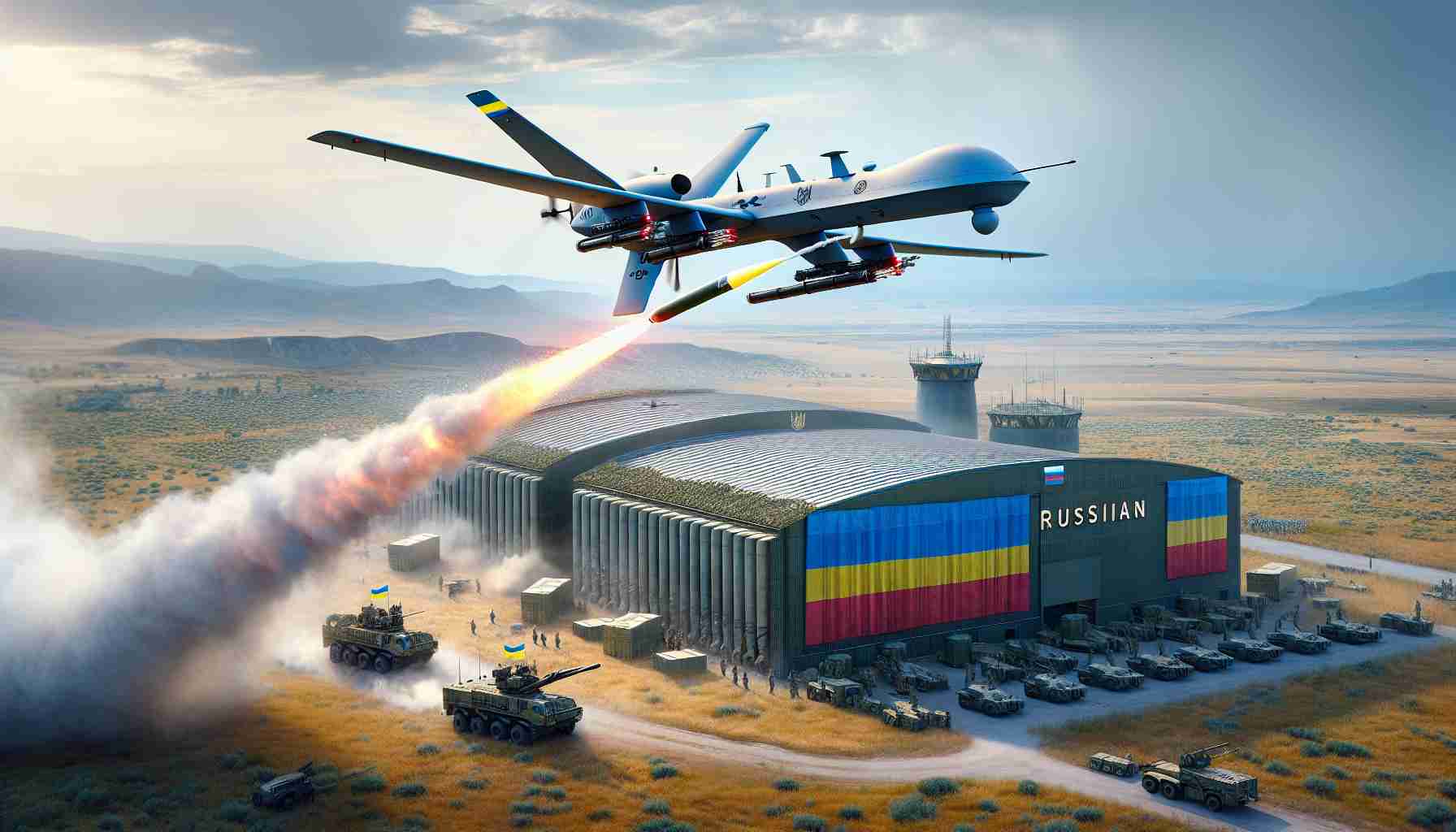
In a notable escalation of hostilities, Ukraine has successfully targeted a drone storage facility in Yeysk, located in southern Russia’s Krasnodar region. The Ukrainian military disclosed that this assault, executed on October 10, aimed at warehouses believed to be housing approximately 400 Iranian-made Shahed drones. A series of explosive images circulated on social media, depicting impressive fireballs illuminating the night as secondary explosions followed the initial strike.
Footage from satellite images captured on October 11 revealed substantial devastation, including the destruction of storage buildings and evidence of intense fires. Ukrainian reports highlighted a precise attack that led to significant damage, differing from claims from Russian state officials, who maintained that Russian defenses had intercepted many incoming Ukrainian drones that night.
The ongoing conflict has intensified, with Ukraine ramping up its drone offensive against Russian military assets, including attacks on strategic targets such as military airfields where explosives and military supplies were stored. Ukrainian authorities have expressed concern over reports that Russia might be repurposing occupied Ukrainian factories to manufacture drone technology for their own use in the conflict.
The situation underlines the growing reliance on drone warfare in the ongoing conflict, showcasing a tactical shift that could redefine the nature of engagements between the two nations. As both sides adapt to the evolving battlefield dynamics, the ramifications of these strategies will likely influence the course of the conflict in the months ahead.
Escalating Drone Warfare: Ukraine Strikes Key Russian Drone Storage
In a significant escalation of drone warfare, the Ukrainian military has executed a successful attack on a drone storage facility in Yeysk, Krasnodar, on October 10. This facility was reportedly housing around 400 Iranian-made Shahed drones, crucial assets for the Russian military’s aerial operations. The attack not only exemplifies Ukraine’s evolving military strategies but also highlights the increasing importance of drone technology in modern warfare.
What were the implications of this strike?
The strike serves a dual purpose: it disrupts Russian drone capabilities while simultaneously exhibiting Ukraine’s growing proficiency in conducting precise, long-range strikes. Analysts suggest that these operations could lead to a broader destabilization of logistics and supply chains for Russian forces, potentially impacting their operational effectiveness in the region.
What are the key challenges in drone warfare?
Both Ukraine and Russia face substantial challenges in the escalating drone conflict. Key challenges include:
1. Counter-drone technology: As both sides enhance their drone capabilities, the development of efficient counter-drone systems becomes essential. This includes electronic warfare tactics and intercepting drones before they reach their targets.
2. Civilian safety: Increasing drone warfare raises the risk of collateral damage, particularly in populated areas. Both parties must navigate the fine line between military objectives and protecting civilian lives.
3. Resource allocation: The financial and logistical strains of producing, maintaining, and deploying drones can divert resources from other essential military needs.
What are the advantages and disadvantages of drone warfare?
Advantages:
– Precision: Drones can conduct strikes with high accuracy, minimizing unintended damage when operated effectively.
– Cost-effectiveness: Compared to traditional manned aircraft, drones generally require lower operational costs and can be deployed for various tasks, from reconnaissance to direct attacks.
– Reduced risk to personnel: Using unmanned systems allows military forces to engage in operations without risking pilots’ lives.
Disadvantages:
– Ethical concerns: The use of drones in warfare raises complex ethical questions, particularly related to accountability for strikes that result in civilian casualties.
– Vulnerability to countermeasures: As drone technology advances, so do countermeasures, making drones susceptible to interception and electronic warfare.
– Dependence on technology: A reliance on drones may lead to vulnerabilities, especially in scenarios where communication systems can be compromised.
In light of these developments, the conflict’s trajectory is likely to shift as both nations continue to innovate within drone warfare. As such, key questions remain about the future implications of these strategies, particularly regarding how they will shape military doctrines and international perceptions of drone usage in conflict.
For more information on the context of drone warfare in the Ukraine conflict, you can explore additional resources at BBC News.



